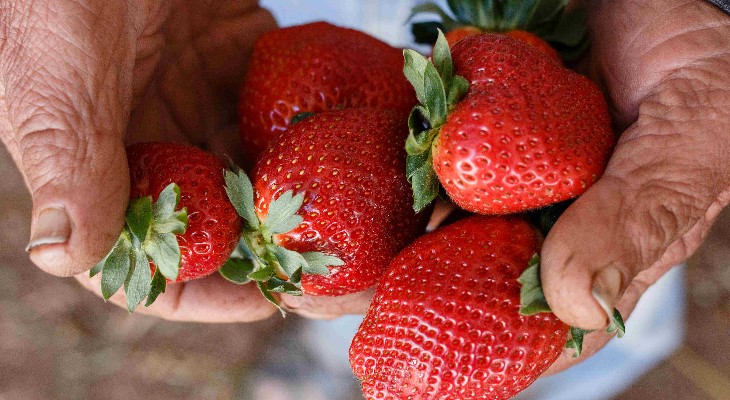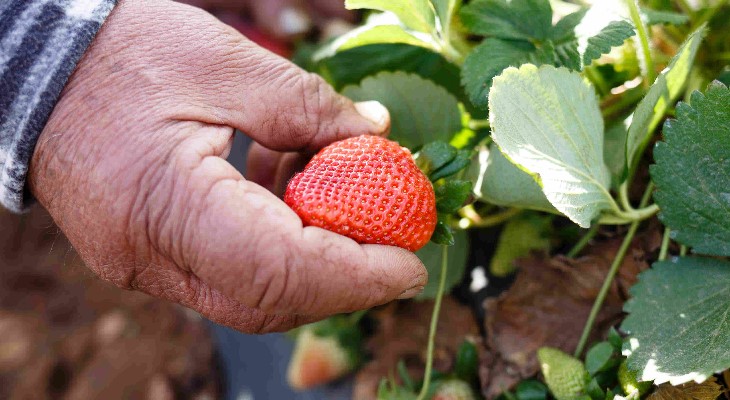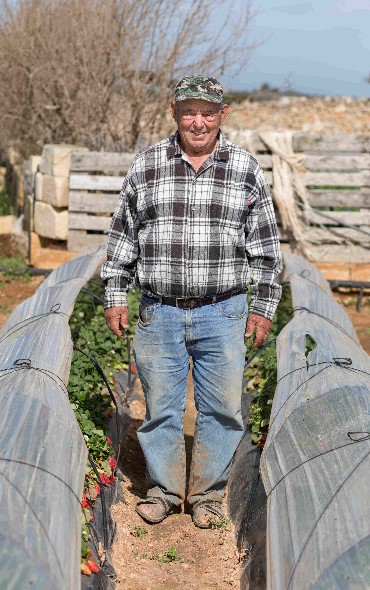Maltese fruit and vegetables are renowned for their flavour and goodness, but farming in Malta is a specialised skill that’s increasingly under threat.

Anthony ‘Toni’ Sammut’s grandfather was one of the first farmers to grow strawberries in Malta, back in the late 1800s. “Back then, the fruit was tiny, the size of a bead, and so sweet. My grandfather would spend a whole day picking it out in the fields and not yield more than four kilos,” Toni says.
Although he grew up in a farming family and married into one too, Toni got into full-time farming quite late in life. “My uncle was a builder. When I left school at 14, I went to work with him, and I took over the company when he died. My wife, Vanna, and I inherited some fields from our parents, and we would work the land after my business hours were over. Then, in my 40s, I decided to throw myself wholeheartedly into farming.”
Vanna’s father was one of the founding members of the Mgarr Farmers Cooperative, back in 1947. However, participation had dwindled. “When I married Vanna, we started talking about bringing it back to life – so I joined the committee and a group of us started planning how to get the organisation back on its feet.”
Toni now serves as the president of the Cooperative, one of the largest of its kind in Malta. It counts among its members around 180 active farmers, nearly all of whom work the fields full-time. Toni also built and opened the Cooperative’s well-stocked retail outlet, which stocks items essential to farming at decent prices – from fertilisers to plastic sheets, seeds and plants, to protective and rain-proof clothing for stormy days.
Toni also saw the opening of the Mgarr Farmers Bar – “a place where the farmer can go and be amongst his own people.” The bar has since become a very well-known spot, even amongst non-farmers, for its hearty, wholesome and inexpensive fare, but Toni has made sure that it’s always a spot for farming folk, first and foremost. “In the evening, after the working day is over, there have to be at least four tables reserved just for farmers.”

Farming in Malta has changed radically in just 50 years. Vanna says that the only crop her father ever used to grow was potatoes, and sometimes a small crop of melons in summer. She recalls watering the fields by hand with her brothers and sisters, patiently, square by square. She also remembers the first time she saw a mechanical water pump. Nowadays, Toni, who has several acres of farmland, grows all kinds of crops – from potatoes, cabbage and garlic to courgettes, cauliflower, and of course, strawberries – no matter what time of year it is. And watering is now done with the flick of a switch, thanks to the drip irrigation system installed in the fields.

Despite the advances in farming science, the life of a farmer is still a difficult one. “You’re almost a slave to the fields,” Toni says. “We’re out there from Monday to Sunday. And there are so many variables to take into account. You could have a beautiful crop growing, and overnight, a bout of hail will kill it all. You’ll have to throw it all away. Or else a pest or a disease might strike your crops, and it’s as if you never had anything growing.”
“If you didn’t grow up in a farming family, it’s difficult to understand how much work it involves,” Vanna adds. “I know a lot of older bachelor farmers who can’t find a wife, because few women who aren’t used to the farming life would want a man who’s married to the fields, and has to get up at three in the morning every day to go sell his wares at the Pitkalija (farmer’s market).”
Another disadvantage Maltese farmers are facing is the glut of cheap foreign produce that has flooded the market in recent years. While high-quality Maltese fruit and vegetables are still very much in demand, many are content to settle for less for the sake of convenience. Nevertheless, the joy that comes from having the skill to grow something from a tiny seed to a perfect piece of produce that can be taken to market is one that is unique to the job, and that keeps many of the farmers going.
“We had a strawberry plant that we brought over from Italy. It was a cultivar that had originated in the United States. It’s a good strain; it flowers early and it is plentiful, and you can sell the fruit at a good price, but it’s delicate – it can die just like that. And in fact, it often does. We brought the cultivator over from the United States, to see if there’s any solution to the problem, and he told us that it’s nothing to do with the quality of the soil or the water, because cases of sudden death have been reported all over the world. It’s all a question of skill – whether you have what it takes to keep it alive or not.” Toni allows for a small moment of pride. “We had a bumper crop that year and very few of my strawberry plants died. There’s a lot to the art of farming that has been lost, but I’ve managed to hold on to it.”
Inigo Taylor